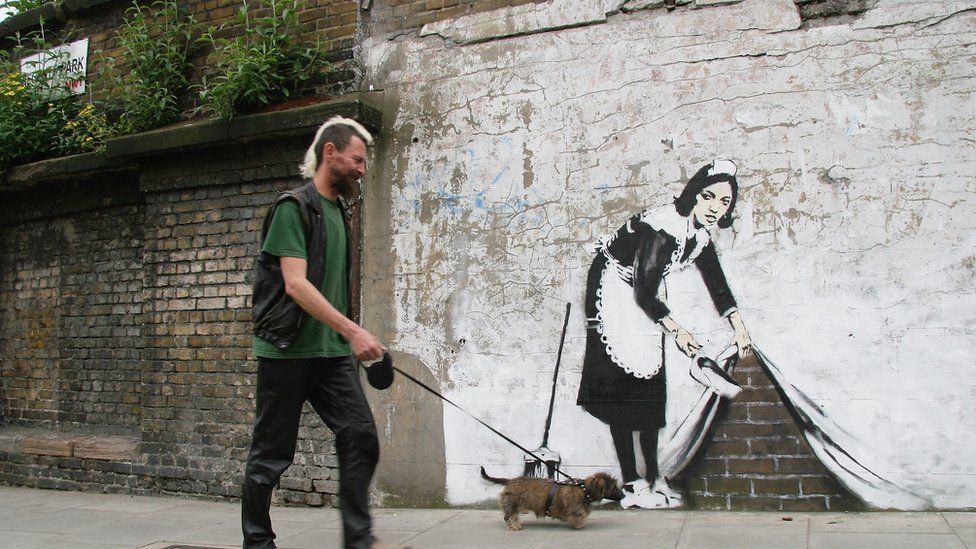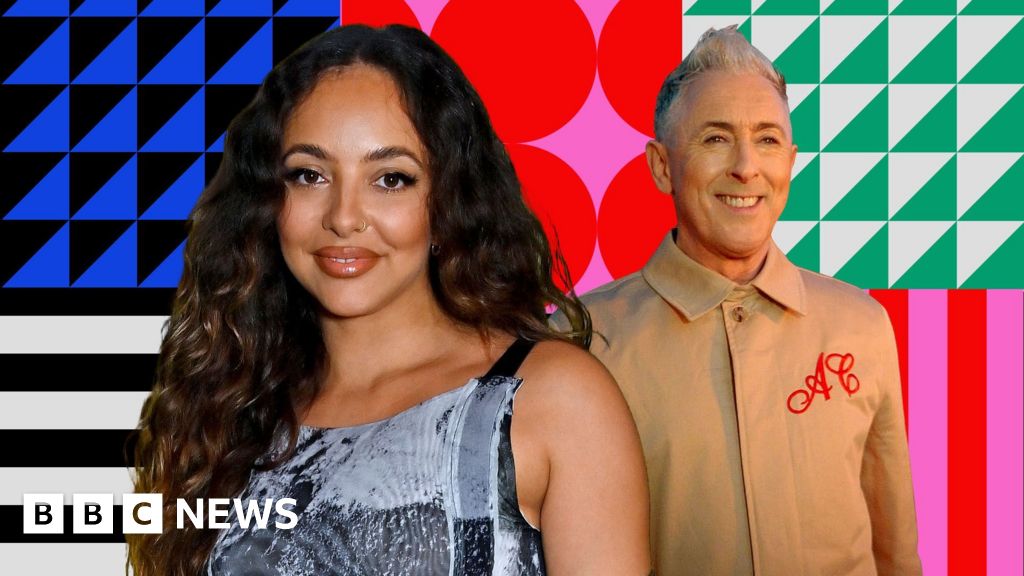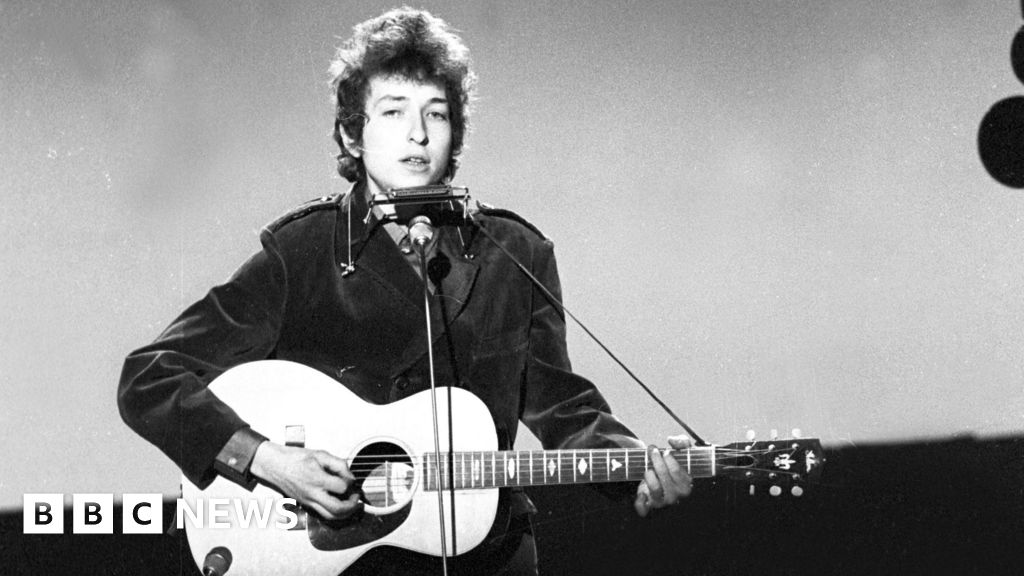ARTICLE AD BOX
 Image source, Getty Images
Image source, Getty Images
Gallery owner Steph Warren claims she posed for Banksy's Sweep It Under the Carpet mural
By Emma Saunders
Culture reporter
For years, art fans and journalists have been trying to figure out the identity of the Bristolian renegade and global phenomenon that is the street artist Banksy.
Now a new podcast, hosted by self-confessed superfan James Peak for BBC Radio 4, aims to understand the man behind the myth, who took graffiti from the underground to the high end art world.
Peak's fascination with Banksy began when he moved to London's east end around the year 2000. He soon became intrigued by "these little rats sprayed everywhere.... and more and more of Banksy's street pieces just started to reveal themselves".
But as with many Banksy fans, it wasn't just the artwork itself - and its social commentary - that fascinated Peak. He was also drawn in by the artist's mystique, and the huge effort involved in producing graffiti undercover at speed to avoid both being identified and arrested by the police.
"There's a great line in his latest show which I think is something like: 'Monet had light, Hockney had colour and I've got police response time,'" Peak says.
Over the years, various news outlets have reported that they know who Banksy is, and in 2017, DJ Goldie referred to Banksy as a man called Rob in an interview.
While rumours abound, his real identity has never been revealed. But have we gone beyond needing to know who he actually is?
Warren agreed to tell her story to Peak for his podcast a year after meeting him
Peak says Banksy's anonymity "let's him keep doing the campaigning stuff he does unfettered" which, along with loyalty, probably stops the few in the know from letting the cat out of the bag.
"Being free to act in the way that he does, that's super valuable."
In fact, very few people who know Banksy have spoken publicly about him at all.
For the podcast, Peak spent a year getting to know gallerist Steph Warren, who worked with Banksy at his print house Pictures on Walls in Shoreditch in the early Noughties when she was in her early 20s.
Once Peak had gained her trust, Warren opened up to him about her experiences, having declined to sign a non-disclosure agreement when she worked at the print house. She has never talked publicly before.
So what was it like working with Banksy and his crew during those heady early days in a working-class area which would soon go on to become hipsterville?
"It was exciting," Warren tells me.
"The office was very DIY, you know, very punk. When I started there I was the packing girl and I was licking the stamps to go on the tubes to send the prints out, then carting them down to Old Street post office. It was very exciting because it felt like I could be involved with helping it grow."
Image source, Steph Warren
Image caption,Banksy signed a copy of his book Wall and Piece for Warren's parents and included a message
She then went on to organise the pop-up exhibition and store, Santa's Ghetto, which then became an annual event.
Banksy was furtive to a degree even within the company and, in the podcast, Warren gives the impression that he's something of an observer, an outsider looking in.
"He was quite reserved," she says. "You could tell that he had a lot going on in his head.
"And I hate to use the word genius because I wouldn't want to call him a genius! But he's a very clever man. [He had] a lot of philosophies and concepts that I just didn't understand at the time, but through his work, I have been able to learn."
Warren says she was asked by Banksy in the office one day to pose for what would become his now famous mural Sweeping It Under the Carpet, which depicted a maid at work. She definitely has a look of Warren. There have also been claims attributed to Banksy that he based it on a hotel maid in Los Angeles.
The stencil, which was said to be a comment on the Western world ignoring global issues, appeared on a wall in north London in 2006.
But behind the scenes, things were beginning to fall apart for Warren as she became addicted to heroin, something she says was part of the art scene for some at the time and that she was introduced to while working there.
Image source, Steph Warren
Image caption,Steph Warren in a photograph taken at Pictures on Walls in 2005
"There are lots of jobs where, to a certain extent, a certain level of alcoholism or substance misuse is accepted," Warren says.
In the podcast, she claims Banksy was "horrified" when he found out and took her for a walk to talk about it but she denied she was taking the drug when he asked.
Warren says heroin also enabled her to block out the grief she was going through after the death of her BMX biker boyfriend in an accident back in her home town of Hastings, not long before she moved to London.
In the podcast, she explains that she then fell out with Banksy after not being available for the last Banksy concept store, Santa's Ghetto, in London in 2006.
It got out of hand on its first day with hundreds of people fighting to get in, in the hope of buying one of the artist's limited prints. Warren had arranged the morning off, but said Banksy was uncharacteristically "fuming" with her because she wasn't there to manage the queue.
In hindsight, she says: "I should have been there, I wasn't exactly a model employee, I was on heroin."
Soon after, Warren and Pictures on Walls parted company.
While she does takes responsibility for her choices, she feels that Pictures on Walls could have offered to put her through a drug rehabilitation programme.
But the drama still wasn't over.
Warren was accused in the press the following year of fraudulently producing Banksy prints and selling them on, something she has always vehemently denied. When she wanted to defend herself publicly, she claims Banksy's PR, Jo Brooks, cautioned her against the move and that they tried to get her to sign an NDA. Warren says she refused.
Members of the local art fraternity defended her and Pictures on Walls then did their own swift investigation.
They found that there was no evidence of any fraud and Warren was exonerated but as Peak says: "By that point, of course, the damage had definitely been done."
After leaving Pictures on Walls, Warren set up her own gallery, Stella Dore, in the Truman Brewery on Brick Lane. It folded a couple of years later, which Warren says was largely due to the global financial crisis and her addiction. However, she says being a woman in a male-dominated industry, alongside the false accusations, didn't help.
"As a woman, you're always disadvantaged anyway. And like in any industry, if there's rumours around your name, then it's an extra reason for people not to use your services."
Jo Brooks PR and Pictures on Walls were both contacted twice for a response by Peak but neither got back to him. (Pictures on Walls' shop closed in 2018 but it is still listed at Companies House and is the controlling entity of Pest Control Office, Banksy's current company which authenticates his works).
Warren later returned to the south coast, entered rehab and successfully re-launched Stella Dore in 2018 in St Leonards, again working with street artists.
"It's a fantastic community here," she says.
"They really have embraced me and looked after me. I've been able to build myself back up here."
Given her time working with Banksy ended on a somewhat sour note, how does she feel about him now, looking back?
"I think what he's achieved is phenomenal and I'm just cross with myself because I wish I'd had a better head on my shoulders back then, you know, to really work for him properly. I think that he's a real force for good overall. Even if my personal experience isn't quite that."
The Banksy Story will be available on BBC Sounds as a boxset from Monday 17 July. The 10 episodes will also be broadcast individually on week days at 13:45 on BBC Radio 4 from the same date.

 1 year ago
106
1 year ago
106








 English (US) ·
English (US) ·